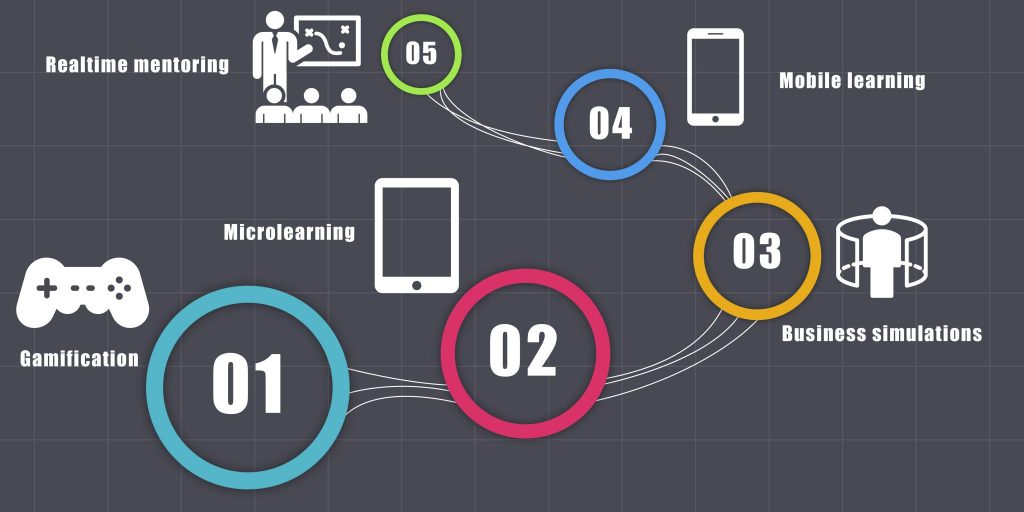
5 e-Learning trends to look forward to
Summarize this blog with your favorite AI:
It is that time of the year when industry leaders predict eLearning market trends for the fast-approaching new year. So, let’s have a look at what does 2018 and beyond have in store for the Learning Management System (LMS) and eLearning industry.
Gamification:
Gamification makes learning difficult concepts easy and fun; besides, it also provides learners with the opportunity to exercise their skills in virtual settings before practising them in real-time situations.
Over the years, gamification has strengthened its roots and is set to take greater traction in 2018. Worldwide, the revenues for game-based learning were around $2.6 billion in 2016 and are expected to rise to around $7.3 billion by 2021.
Microlearning:
More companies will move towards microlearning in 2018. Microlearning packages content for learners in very small and very specific micro bites or nuggets of about 90 to 120 seconds each.
Each nugget is complete and is designed to address a specific learner’s need. Besides, it is made as crisp as possible while integrating rich media formats to enable learners to practice the concept it encapsulates.
In fact, this trend is gaining trajectory driven the research insights into the learning and retention habits of the new generation, which show that shorter is more effective to address the challenges of dwindling attention spans and distractions of the new generation of learners.
Business simulations:
Basically, business simulation learning involves animated programs that have ‘humans’ and ‘opponents’ whose interactions influence each other and on the environment.
As in case of gaming, employees control the movements and actions of the animated characters, with the aim to develop some competitive skills. These simulations mirror real business challenges, have an element of competitive challenge, use images and data to enhance learner experience, and incorporate data and reporting for feedback.
Any mistake in real-time situations can cost businesses not only in terms of money but also reputation, which can have far-reaching consequences. Therefore, organizations are incorporating task-based simulations in their training to allow learners to hone their skills and find solutions to problems that they would encounter in the real world.
Mobile learning:
As mobile devices are becoming the preferred tools to access the Internet, organizations are taking the mobile learning route to deliver their learning and development content and strategies.
The Global Human Capital Trends report by Deloitte shows that mobile learning now features among the top business development priorities for companies since the new rules of learning call for the availability of information, anytime, anywhere and on a range of mobile platforms.
Real-time mentoring:
Organizations are increasingly realizing that blended learning, that is, a mix of both traditional and online learning, is the best way forward.
While online learning provides learners with the opportunity to learn at their own pace and hone their skills through simulations and gamification, coaching and mentorship programs in traditional classroom settings provide the much-needed human interaction.
The eLearning technology is changing rapidly. Traditional management systems are gradually evolving to include a wide range of new technologies for content curation, distribution and delivery.
To reinvent themselves as organizations of the future, companies need to re-evaluate their learning and training strategies to take advantage of the new developments.
Discover how a mobile-first training platform can help your organization.
KITABOO is a cloud-based platform to create, deliver & track mobile-first interactive training content.


